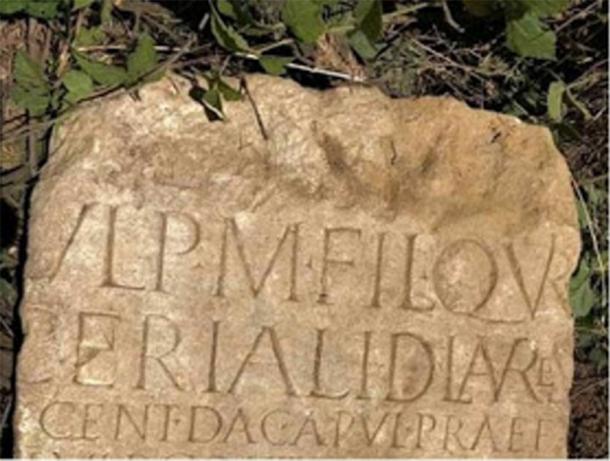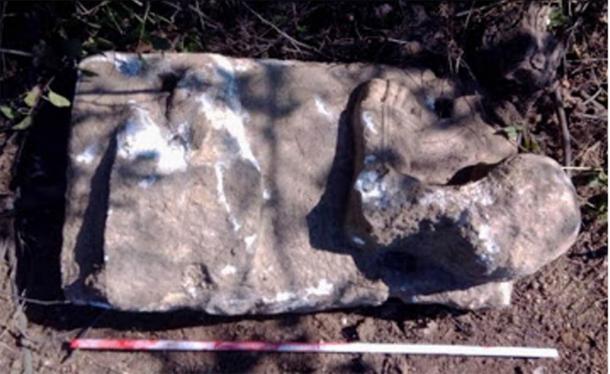Serbian Roman Artifact Vanishes 24 Hours After Discovery
A just recently excavated ancient Serbian Roman artifact, a stone piece covered with etched Latin text, has actually been taken just 24 hours after it was found. The unusual Roman artifact was found on July 10, 2020, throughout roadway building works resulting in the Vinča landfill site.

According to a report on Archaeology News Network among the roadway, employees notified the National Museum in Belgrade about the amazing finding, nevertheless, when a museum archaeologist got to the site the next early morning the Serbian Roman artifact had actually disappeared without a trace.
Serbian Roman Artifact and The Lost Life Of A Roman Authorities
The museum archaeologists understood the Serbian Roman artifact belonged to a marble monolith dating to the second-century which one side on the artifact portrayed 2 feet using shoes that belonged to a previous sculpture.
The opposite, nevertheless, was engraved with 15 lines of Latin text explaining in information the life and times of a high-ranking Roman military authority who, according to the National Museum in Belgrade, “led various military detachments against the Dacians and served in three legions.”
The majority of the contemporary state of Serbia belonged to the Roman Empire for about 600 years, from the first century BC up until the arrival of the Slavs in the Balkans throughout the sixth-century.
This ancient monolith might have been a substantial addition to the recognized ancient history of Serbia since it likewise supplied brand-new proof about a war in the location of Singidunum or ancient Belgrade.
Stolen Artifact an Example of Daring, Swift Archaeological Theft
Prior to the stone piece inexplicably vanished the museum personnel had actually notified the landfill management group that due to its size and weight the stone was going to be raised by a crane and thoroughly moved to the National Museum in Belgrade.
A museum representative stated in a news release that historical items found in the area of the Republic of Serbia “belong to the Republic of Serbia by law.” And they likewise stated the “epigraphic monument” had actually been formally taped which an administrative treatment had actually been actioned to recover and restore it.
And this implies that the event is being dealt with as a case of “aggravated theft” and criminal charges have actually been raised versus the unidentified lawbreaker( s).
How in the world, in 2020, can such a logistically complex outdoor criminal activity happen and be successful? I imply it’s not like the artifact was a golden ring or a silver bracelet that a solo lawbreaker might simply conceal in their pocket.
To have actually moved such a large stone, a whole group of males with heavy building devices would have been needed. And this is more than likely precisely what occurred: a criminal gang more than likely settled the best individuals at the site, handled to get the things into a truck, and after that rapidly vanished to offer the stone to the greatest bidder on the dark side.
However as bad as this all noises, it worsens, since this kind of daytime break-in is prevalent in Serbia.

Serbia: An Area With Excessive Unguarded Treasure
A 2016 paper ” Historical Break-ins of Antiques in Serbia” released by a group of researchers from the Institute of Archaeology, Belgrade, Serbia, specifies that the area of Serbia is a target for historical crooks since it has actually been house to lots of particular cultures throughout the past: “from European prehistory, Roman civilization, Byzantine and Serbian Medieval art up to the present day.”
What this implies is that Serbia has countless “unguarded” historical sites and middle ages abbeys representing the nation’s “material, cultural and spiritual past.” And with the majority of sites being mainly unguarded, it is not unexpected that criminal gangs tear the landscape apart in Serbia.
However, contributing to the large weight of untouched sites is the issue of simply how important even the tiniest Serbian artifacts can be.
An example of an unlawful historical excavation in Serbia was the discovery of the “Golden Avar Belt Buckle,” which was found with a metal detector at a depth of about 2 meters in the town of Divoš, near Sremska Mitrovica (Sirmium). This single palm-sized things was approximated to be worth “around one million euros.”
Thankfully when it comes to the taken belt buckle,” МUP RS “, the Serbian department for combating the mob, detained the primary criminal and his accomplices, who were all charged with a 3 year suspended sentence for contravening the unlawful trade act, which restricts unapproved historical excavations. Ideally, the just recently taken stone Roman artifact and those who took it will quickly be discovered.





